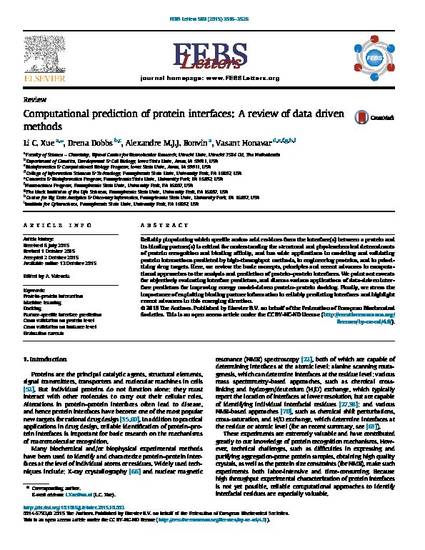
Article
Computational prediction of protein interfaces: A review of data driven methods
FEBS Letters
Document Type
Article
Disciplines
Publication Version
Published Version
Publication Date
1-1-2015
DOI
10.1016/j.febslet.2015.10.003
Abstract
Reliably pinpointing which specific amino acid residues form the interface(s) between a protein and its binding partner(s) is critical for understanding the structural and physicochemical determinants of protein recognition and binding affinity, and has wide applications in modeling and validating protein interactions predicted by high-throughput methods, in engineering proteins, and in prioritizing drug targets. Here, we review the basic concepts, principles and recent advances in computational approaches to the analysis and prediction of protein–protein interfaces. We point out caveats for objectively evaluating interface predictors, and discuss various applications of data-driven interface predictors for improving energy model-driven protein–protein docking. Finally, we stress the importance of exploiting binding partner information in reliably predicting interfaces and highlight recent advances in this emerging direction.
Rights
This is an open access article under the CC BY-NC-ND license (http://creativecommons.org/licenses/by-nc-nd/4.0/).
Copyright Owner
The Authors
Copyright Date
2015
Language
en
File Format
application/pdf
Citation Information
Li C. Xue, Drena Dobbs, Alexandre M.J.J. Bonvin and Vasant Honavar. "Computational prediction of protein interfaces: A review of data driven methods" FEBS Letters Vol. 589 Iss. 23 (2015) p. 3516 - 3526 Available at: http://works.bepress.com/drena-dobbs/62/

This article is from FEBS Letters 589 (2015): 3516, doi: 10.1016/j.febslet.2015.10.003. Posted with permission.